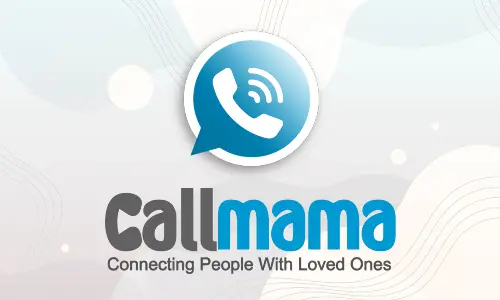What is VoIP?
VoIP (Voice over Internet Protocol) refers to the technology that allows users to make voice calls over broadband internet connections instead of traditional analog telephone lines. Voice-over-IP converts analog voice signals into digital data packets that can be transmitted over the internet. Users can make and receive calls via VoIP by connecting specialized devices and software.
Benefits of VoIP Calls
Cost Savings
- VoIP calls are much cheaper compared to traditional long-distance and international calls made over public switched telephone networks. VoIP providers offer affordable monthly plans.
Flexibility
- Users can make VoIP calls from anywhere they have a stable internet connection. Calls can be forwarded to multiple devices like desktop phones, laptops, or smartphones.
Portability
- VoIP numbers are not tied to a physical location. Users can take their phone numbers with them to a new residence or office. All they need is an internet connection.
Advanced Features
- VoIP offers a host of advanced communication features like audio/video conferencing, instant messaging, call recording, and more.
How VoIP Calls Work
For VoIP calls to work, the basic components required are:
- VoIP Phone Adapter – This is the device that converts analog voice signals into digital data packets that can be transmitted over the internet (and vice versa). Common examples include VoIP phones, Analog Telephone Adapters (ATAs), IP phone adapters, wireless VoIP adapters, and VoIP-enabled modems and routers. These adapters connect to the internet via Ethernet or WiFi.
- Broadband Internet Connection – A high-speed wired or wireless internet connection is required for the VoIP system to function optimally. This includes cable, DSL, fiber optic, 4G/5G mobile internet, satellite broadband, or any other broadband internet access with adequate speed and bandwidth to handle phone calls. Low-speed dial-up connections are generally not suitable for VoIP calls.
- VoIP Service Provider – This refers to a company that provides VoIP phone service, including call routing, software, infrastructure, and customer support. Top VoIP providers for homes and businesses include names like RingCentral, Vonage, 8×8, Ooma, and Nextiva. The provider delivers advanced calling features, phone numbers, online account management and call routing intelligence.
Step-by-Step Process for Making and Receiving a VoIP Call
When a user makes a VoIP call, here is what happens step-by-step:
- The caller picks up their VoIP phone or activates their VoIP app and dials the recipient’s phone number.
- The analog voice signal of the caller is captured by the phone microphone and converted into digital data packets by the VoIP adapter or app interface. This process is called ‘digitizing’ the voice or ‘coding’.
- The VoIP software encodes the digital packet with relevant metadata such as the recipient’s address (phone number), packet order, timestamps, etc.
- The packets are transmitted over the broadband internet connection onto the VoIP service provider’s servers. This connection allows the packets to travel across the internet.
- The VoIP provider’s servers and software route the call packets to the recipient’s physical location and VoIP device address. This is enabled by the phone number dialed.
- At the receiving end, the digital packets reach the recipient’s VoIP phone adapter or app.
- Here the packets are reassembled using their embedded information to reconstruct them into the original voice signal. This process is called ‘decoding’.
- The recipient’s phone rings, and they hear the caller’s voice through their phone speaker or headset.
- A return voice signal travels back to the caller following the same process. This establishes a two-way VoIP phone conversation.
The process remains essentially the same for receiving a VoIP call. The key steps are:
- The caller initiates a call, which gets routed via VoIP to the recipient’s device.
- The VoIP phone adapter or app rings to alert the recipient of the incoming call.
- When the recipient answers, the incoming packets get decoded into a voice signal.
- The recipient’s voice is encoded into packets and sent back to the caller, creating a two-way call.
- This session stays active until either party ends the call.

VoIP Equipment and Software: Capabilities and Options for Business Calling
VoIP Hardware
VoIP Phones
Dedicated VoIP Phones are designed specifically to work on VoIP networks rather than traditional analog phone lines. VoIP Calls have Ethernet ports that connect directly to the VoIP router or modem to access the internet data network. This allows them to convert voice into digital packets that can be transmitted over the internet.
VoIP Calls look and function similarly to traditional business phones, with features like multiple line support, call transfer, conferencing, voicemail access, volume controls, muting, and speakerphone built-in. Top VoIP phone brands include Polycom, Cisco, Yealink, and Grandstream. Companies can choose from basic, mid-range, and high-end models with various displays, programmable buttons, directory options, and connectivity ports.
VoIP phones provide a reliable and high-quality voice-calling experience, with the added benefit of advanced features included. Employees can manage calls directly from their desktop phones. Some VoIP phones also support video calling and HD audio. Overall, VoIP phones give businesses a traditional telephony experience while providing integration with VoIP systems.
ATA (Analog Telephone Adapters)
An ATA is a small device that connects analog telephones, fax machines, modems, and other analog communication devices to the digital VoIP network to enable VoIP Calls. The ATA converts analog voice signals into digital data packets for transmission over the internet, and converts incoming digital signals back into analog format. This allows traditional analog phones and other equipment to interoperate with the VoIP system for VoIP calling.
ATAs have standard telephone ports like RJ11 to connect analog devices. They have an Ethernet port to connect to the VoIP router and access the internet. Leading ATA manufacturers include Obihai, Cisco, Linksys, Polycom, and Grandstream. ATA adoption allows businesses to continue using their existing analog phones and utilize their legacy equipment with their new VoIP phone system.
VoIP Routers
VoIP routers are advanced network routers that have built-in VoIP gateway functionality to connect VoIP and analog telephony equipment to the IP network for VoIP Calls. Voice over IP routers allow both digital and analog endpoints like VoIP phones, analog phones, fax machines, and more to be on the same network to enable VoIP Calls.
Features include traffic prioritization for voice packets, network security, advanced QoS monitoring and management, failover capabilities, and call routing optimization. Leading VoIP router brands include Cisco, TP-Link, Linksys, Netgear, and Digium. Voice over IP routers provide an integrated Voice over IP gateway solution rather than having separate routers and gateways.
VoIP Software
Softphones
A softphone is Voice over IP endpoint software installed on a computer, laptop or mobile device that enables you to place and receive Voice over IP Calls directly from your device’s microphone and speakers. No physical desk phone is required. Softphones encode voice into VoIP data packets and include many standard phone features plus video calling, call recording, QR code contact scanning, and more for VoIP Calling.
Popular softphones for desktops include ZoiPer, X-Lite, Jitsi, and Skype for Business. For mobile softphones, options include Groundwire, Acrobits Softphone, ZoiPer Mobile, and more for iOS or Android. Businesses can use softphones to enable VoIP mobility without dedicated Voice over IP hardware. Softphones often integrate with leading Voice over IP platforms.
VoIP Apps
Similar to softphones, there are dedicated Voice over IP apps for smartphones and tablets that allow VoIP calling over any available internet connection, whether mobile data or WiFi. VoIP apps convert voice to IP packets, bypassing traditional telephony networks.
Leading options include Skype, WhatsApp, Google Voice, Facebook Messenger, Viber, and Line2. There are also business-focused mobile VoIP apps that integrate with specific Voice over IP business phone systems and provide mobility, call transitioning, messaging, and other features for VoIP Calls. Employees can cost-effectively make business VoIP Calls over Voice over IP directly from their mobile devices using apps.
Unified Communications Platforms
Full-featured, unified communications platforms provide software-based Voice over IP phone service wrapped into a multi-modal, cloud-based collaboration solution for VoIP Calls. Providers such as RingCentral, 8×8, Microsoft Teams, Cisco Webex Calling, Zoom Phone, and Dialpad combine Voice over IP calling with video conferencing, team messaging, screen sharing, and other capabilities in one app for enabling VoIP Calls.
These cloud platforms serve as virtual Voice over IP PBX systems, delivering advanced call management, auto-attendant, IVR, visual voicemail, and contact center features. Their multi-modal bundles integrate VoIP with conferencing, messaging, a contact center, and other tools for a complete collaboration environment. They can integrate with analog equipment as well as VoIP phones and software endpoints.
VoIP Providers and Services: Options for Home and Business Calling
Voice over IP (VoIP) allows making phone calls over the internet rather than traditional telephone lines. To use VoIP services for VoIP Calling, customers sign up with a VoIP provider. There are various types of VoIP providers and plans to meet different needs for VoIP Calls.
Types of VoIP Providers
Local VoIP Providers
Local or regional VoIP providers offer service in specific metro areas. They provide unlimited local calling and a limited number of nationwide minutes. Local Voice over IP providers include Callmama, Lestsdial, and Ooma.
The benefit of local providers is they offer flat-rate unlimited local calling without metered rates. However, long-distance is limited or costs extra. They are ideal for customers who make most calls within the same area code.
Long Distance VoIP Providers
Long-distance Voice over IP providers like Nextiva, RingCentral, and 8×8 focus on nationwide calling with unlimited minutes. They provide calling across the U.S. and Canada without per-minute charges.
These providers suit businesses that make frequent long-distance calls to multiple area codes. However, international calling may cost extra. Long-distance providers are popular for customers who need a nationwide calling footprint.

International VoIP Providers
International Voice over IP providers specialize in calling destinations outside North America. Companies like VOIPo and Vonage Business focus on affordable international minutes. Rates in some countries can be as low as 1 cent per minute.
This enables businesses with international customers, partners, or operations to save significantly on global calling costs. Limitations may include fewer domestic minutes or features. International providers meet the global calling needs of multinational organizations.
Residential vs. Business VoIP Plans
VoIP services offer specialized plans for residential and business customers.
Residential VoIP
Residential VoIP plans are designed for home phone usage with features like:
- Unlimited local & long distance domestic calling
- Basic call management features like call waiting, 3-way calling
- Low-cost international minutes
- Voicemail to email
Business VoIP
Business Voice over IP plans to add advanced features like:
- Toll-free numbers, auto attendants, call queues
- Advanced call routing rules and hunting groups
- Integration with CRM platforms
- Mobile apps and softphones
- Detailed call analytics and reporting
Leading business providers include RingCentral, 8×8, Nextiva, Vonage Business, and Dialpad. Prices start around $20 per user/month.
Business Voice over IP delivers robust PBX capabilities, integration options, and scalability that residential plans lack. This supports the advanced needs of companies versus individual households.
VoIP Features and Tools
VoIP providers offer capabilities beyond just cheap phone service. Typical features include:
Number Porting – Transfer existing phone numbers to the Voice over IP network
Virtual Numbers – Provision additional numbers, toll-free and local
Voicemail – Voicemail to email, visual voicemail, automated attendants
Mobility – Softphones, desktop & mobile apps, call transitioning
Conferencing – Audio conferencing, video and screen sharing
Contact Center – Call queues, interactive voice response (IVR), call recording
Messaging – SMS/MMS messaging, team chat apps, fax support
CRM Integrations– Sync contacts, enable click-to-dial, show caller info
Admin Portal – Manage call routing rules, users, analytics reporting
API Access – Integrate with other business apps and workflows
Top providers offer a robust suite of telephony and unified communications features beyond basic calling. This enhances productivity, mobility, and integration capabilities.
Pros and Cons of VoIP Phone Service
Advantages of VoIP
Cost Savings
VoIP can lead to substantial cost savings compared to traditional landline phone services for VoIP Calls. By transmitting calls over the internet rather than the PSTN, Voice over IP avoids expensive long-distance and international call rates, as well as recurring monthly line fees charged by telephone companies for VoIP Calling. VoIP providers offer flat-rate unlimited local and long-distance calling plans at a fraction of the cost of traditional telephone bills for VoIP Calls.
Flexibility
VoIP phone systems are extremely flexible and scalable. Since the system is based in the cloud, companies can easily add or remove lines without having to install new wiring or hardware. Voice over IP makes it easy to scale up with business growth or seasonal fluctuations. It also enables flexibility in device usage, with the ability to use desk phones, softphones on computers, or mobile apps on smartphones and tablets.
Advanced Features
Voice over IP enables a wide range of advanced calling features that traditional phone systems lack, such as intelligent call routing, auto-attendants, visual voicemail, audio and video conferencing, call queues, mobility features, CRM integrations, call analytics, IVR menus, and more. These capabilities enhance productivity and customer service.
Reliability
With the right internet bandwidth and redundancy mechanisms, VoIP call quality can rival or surpass traditional telephony. Packet prioritization, improved internet speeds, and QoS monitoring help ensure consistent call connectivity. Leading providers implement failover mechanisms in case of internet outages or power failures.
Disadvantages of VoIP
Reliance on Internet
One downside of VoIP is its total reliance on a broadband internet connection. Any internet outage will disrupt phone service. To maximize uptime, Voice over IP deployments require a dedicated, high-speed business internet circuit, redundancy through a secondary ISP, and power supply backups in case of electricity failure.
Call Quality Issues
Insufficient bandwidth, network congestion, VPN usage, or WiFi dead zones can negatively impact call quality. Choppy audio, latency, echo, and dropped calls can occur. Careful network assessment, traffic shaping, and QoS policies are necessary to optimize call quality across the business network infrastructure.
Emergency Service Limitations
VoIP 911 calls must include accurate location data for proper emergency dispatch, which isn’t automatically supported like with traditional PSTN service. Providers use registered address info to route 911 calls, but this may be unreliable for mobile softphones. Proper address registration is critical for reliable 911 service over VoIP.
Security Vulnerabilities
Like any internet-based system, Voice over IP solutions are potentially subject to cybersecurity threats like hacking, wiretapping, fraud, or denial of service attacks for VoIP Calls. Providers must implement robust measures to detect and prevent intrusions to protect VoIP Calls. Encryption protocols like SRTP protect VoIP Calls against eavesdropping. Companies should verify the provider’s security capabilities for Voice over IP Calling.

The Future of VoIP Phone Service
VoIP (Voice over Internet Protocol) has rapidly evolved into a mainstream phone system solution, displacing traditional landlines for VoIP Calls. Voice over IP adoption will likely continue growing as the technology integrates with emerging innovations and delivers new capabilities for Voice over IP Calling.
Projected Growth of VoIP
Research firm IDC predicts the Voice over IP services market will grow at a 9% compound annual rate from $86 billion in 2021 to $136 billion by 2026 as more businesses transition to cloud-based phone solutions.Voice over IP penetration in US households is forecast to exceed 60% by 2025, up from just 15% in 2015.
Several key drivers will support VoIP growth:
- The ongoing retirement of the public switched telephone network (PSTN) copper infrastructure
- Broadband internet and 5G expanding globally
- Increased comfort with cloud-based systems
- Growing number of internet-enabled devices
VoIP aligns with major technology shifts, allowing it to displace legacy phone infrastructure. Its growth trajectory looks strong for the foreseeable future.
Integration with 5G
The emergence of high-speed 5G cellular networks offers new opportunities to enhance Voice over IP call quality and mobility for VoIP Calls. 5G’s superior bandwidth, speed, and low latency will help Voice over IP technology deliver even better voice connectivity across more device types for VoIP Calling.
Specific benefits that 5G enables for VoIP include:
- Seamless handoff between WiFi and mobile networks – no dropped calls
- Stronger security with built-in encryption
- Highest fidelity audio quality for VoIP calls
- Support for IoT devices like smartwatches and connected cars
- No perceived delay even for video calling and conferencing
As 5G networks spread, they will create an ideal environment to maximize VoIP capabilities.
Integration with AI
Artificial intelligence (AI) will power the next generation of Voice over IP innovations. AI can enhance many aspects of a business phone system:
- Predictive analytics to forecast calling volume by time of day, improving staff planning
- Speech recognition for automated transcription of phone messages and recordings
- Sentiment analysis to detect stress levels on customer service calls
- Intelligent assistants that interact with callers to efficiently route calls, answer questions, or make appointments
- Hyper-personalized marketing messages and recommendations based on past interactions
AI and machine learning will enable Voice over IP systems to continuously improve call handling, analytics, and automation.
New Features and Applications
VoIP platforms are well-positioned to deliver cutting-edge communications capabilities moving forward:
- Holographic calling to beam 3D video projections of callers into a room
- Universal translation to break down language barriers on global calls
- Built-in screen and document sharing for visual collaboration
- Virtual reality integration for more immersive video meetings through VR headsets
- Automated speech analytics for real-time call monitoring to ensure compliance
- Cloud contact center functionalities like customer journey orchestration and agent assist tools
VoIP innovation will drive the emergence of more responsive, intelligent, and functionally rich communications.
Conclusion
Voice over Internet Protocol (VoIP) has rapidly become a viable and popular alternative to traditional telephone service for VoIP Calls. By converting analog voice signals into digital data packets and transmitting VoIP Calls over the internet, Voice over IP provides several distinct advantages for both residential and business users of VoIP Calling.
For consumers, VoIP enables significantly lower costs, especially for long distance calling which can be included in flat-rate packages. Features like voicemail to email transcription provide added convenience. The ability to take your phone number if you move is a major benefit as well.
For businesses, VoIP delivers an enterprise-grade phone system via the cloud, eliminating the need for expensive on-premise hardware. Companies can scale up lines instantly without new wiring. Advanced features like auto-attendants, ring groups, and CRM integrations enhance operations. Global companies can unify multi-location communications.
With VoIP Calls , costs drop dramatically while capabilities expand greatly for VoIP Calls. Sound call quality rivals landlines given adequate bandwidth and QoS monitoring for Voice over IP Calling. Limitations like emergency service constraints and reliance on internet connectivity can be mitigated with proper planning for VoIP Calls. As high-speed 5G networks expand globally, VoIP systems will gain additional performance boosts for VoIP Calls.
FAQ’s
- What is VoIP and how does it work?
VoIP stands for Voice over Internet Protocol. It allows making voice calls over the internet instead of traditional phone lines. VoIP converts your voice into digital data packets that are transmitted over the internet and converted back into voice on the other end.
- What are the main benefits of VoIP phone services?
The main benefits of VoIP are cost savings compared to traditional phone services, flexibility to use your phone system anywhere with an internet connection, advanced features like auto attendants and call routing, and scalability to easily add lines.
- What kind of equipment do I need for VoIP?
You need a broadband internet connection, VoIP phones or adapters, VoIP router/modem, and a subscription to a VoIP provider. Many providers include phones with the service. You can also just use softphones on your computers and mobile devices.
- How is call quality with VoIP Calls?
With a good internet connection, call quality is generally very good, similar to a landline for VoIP Calling. Features like QoS monitoring, traffic prioritization, and redundancy mechanisms help maximize uptime and reliability for VoIP Calls. Call quality issues can occur due to network congestion or insufficient bandwidth impacting VoIP Calls.
- Is VoIP secure?
Leading VoIP providers implement security measures like encryption protocols, access control, and network monitoring to protect systems and calls. However, Voice over IP systems can be vulnerable to threats if the provider fails to implement adequate security or if the business network has vulnerabilities. Proper IT security is important.











